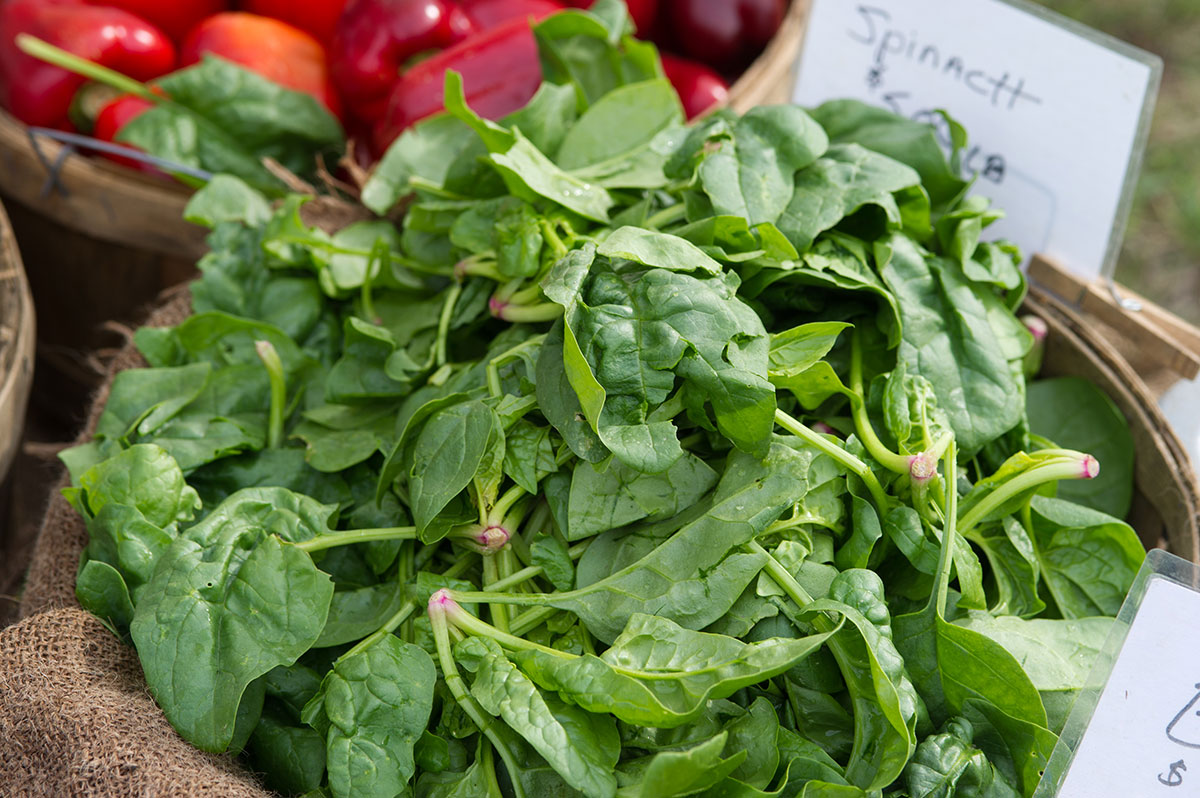
Eat Well! Spring/Summer 2019
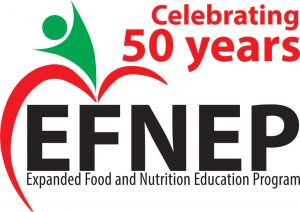
A Newsletter for Healthy Eating!
Print a copy of Eat Well! Spring/Summer 2019 (PDF)
Inside this Issue:
- EFNEP’s 50th Anniversary!
- Food Bites: Using WIC, SNAP and Farm Fresh Rewards to Buy Local Produce
- Kid’s Korner: Colorful Veggie Salad with Homemade Croutons
- Ask EFNEP! Deborah Barnett, Kennebec County
- Food Safety Corner: Washing and Storing Greens
- Eat Well Recipe: Veggie and Protein-Packed Breakfast Strata
 Looking for ways to save money on food?
Looking for ways to save money on food?
The EFNEP newsletter has always given you great ideas on how to save money on food. Now these ideas are even easier to spot. Look for this picture in the EFNEP newsletter to find great tips to save money on food. SAVE MONEY.
EFNEP’s 50th Anniversary!
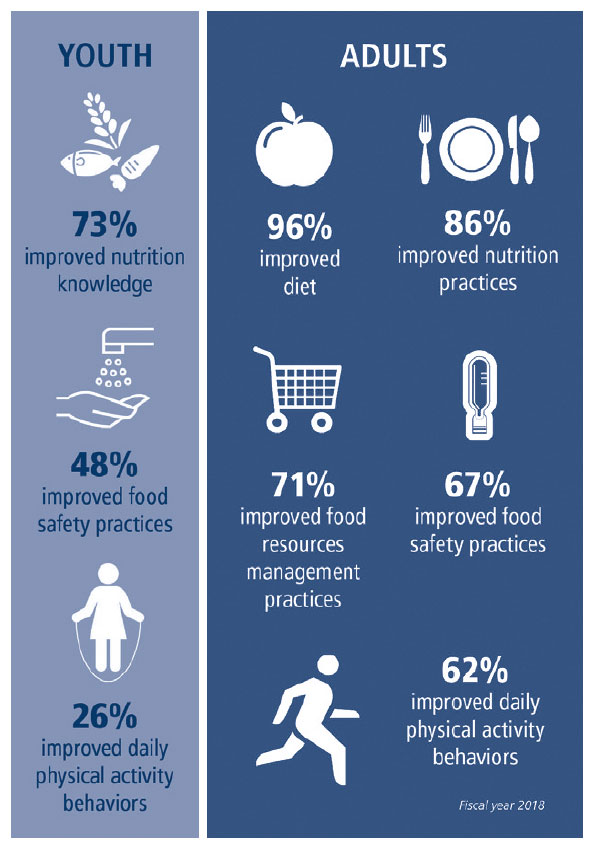 Kate Yerxa, Extension Educator
Kate Yerxa, Extension Educator
For 50 years the Cooperative Extension System has delivered the nation’s FIRST nutrition education program – the Expanded Food and Nutrition Education Program (EFNEP).
In Maine, EFNEP has been a key part of the University of Maine Cooperative Extension’s educational outreach since 1969.
Since the beginning, EFNEP educators have worked closely with community partners to educate tens of thousands of families and youth. The education and hands-on learning delivered through EFNEP has increased nutrition knowledge, improved cooking skills, and has taught participants to stretch their food dollars to provide healthier foods to their families.
EFNEP has made a difference in the lives of Maine families.
Thank you to all past and present Maine EFNEP educators for the important work accomplished over the past 50 years!
University of Maine Cooperative Extension Expanded Food and Nutrition Education Program is free to income-eligible adults with children and those eligible for programs such as SNAP, WIC, or Head Start.
 Maine EFNEP Staff
Maine EFNEP Staff
Row 1: Kathy Savoie, Debbie Barnett, Laurie Bowen
Row 2: Rita Stephenson, Brenda Bracy, Ruth Cyr, Laurie Colton, Kate Yerxa, Alice Miller
Row 3: Lisa Fishman, Alyssa Adkins (hidden), Christine Finemore, Debra Spurling, Eric Thoreson
Missing: Diane Qualey
Food Bites:
Using WIC, SNAP and Farm Fresh Rewards to Buy Local Produce
By Rebecca Sprague, UMaine Dietetic Intern
 Farmers’ markets are a great way to buy fresh produce and support local businesses. Did you know that WIC checks and EBT cards from SNAP can be used at farmers’ markets? If you are a SNAP participant, you may be able to earn bonuses by purchasing local produce. Read on for more information.
Farmers’ markets are a great way to buy fresh produce and support local businesses. Did you know that WIC checks and EBT cards from SNAP can be used at farmers’ markets? If you are a SNAP participant, you may be able to earn bonuses by purchasing local produce. Read on for more information.
WIC
- In Maine, adults and children over nine months of age enrolled in WIC can receive farmers’ market checks.
- Farmers’ market checks can be used from June through October.
- Checks can be used at WIC approved vendors at farmers’ markets or WIC approved farm stands. Farmers’ market checks can only be used to buy fresh and unprocessed fruits, vegetables or herbs.
SNAP (EBT)
- SNAP participants can use their EBT card at participating farmers’ markets. Visit Markets that Accept EBT Cards for a full list of participating markets.
- At some markets, SNAP participants pay at a central EBT terminal. The information booth of the farmers’ market will have more information on how to use an EBT card for purchases.
- Certain participating farmers’ markets give EBT card users a “Maine Harvest Buck” for every dollar spent at the market. Harvest Bucks can then be spent at the farmers’ market on fresh, unprocessed fruits or vegetables. A list of participating markets is available at Maine Harvest Bucks.
Farm Fresh Rewards
- SNAP participants shopping in participating grocery stores earn $5 vouchers for every $5 they spend on local foods including fruits and vegetables. A full list of participating stores is available on Farm Fresh Rewards.
- These vouchers are valid at those same stores and can be spent on more local fresh, frozen, or dried fruits and veggies. Vouchers cannot be used at farmers’ markets.
- Farm fresh rewards are available all year.
 Kid’s Korner:
Kid’s Korner:
Colorful Veggie Salad with Homemade Croutons
Be sure to supervise children in the kitchen, especially around knives and the oven!
Crouton Ingredients
- 2 slices whole-wheat bread, torn or cut into bite-sized pieces
- 1 tablespoon of oil (olive or vegetable oil)
- Garlic powder to taste
- Salt to taste
Salad Ingredients
- 3 cups of salad greens (spinach, romaine, or a mix), washed* if not pre-washed
- 1 large carrot
- 1 yellow bell pepper
- 1 large tomato or 1 cup cherry tomatoes
- 1 cucumber
* See Food Safety Corner for directions for washing greens.
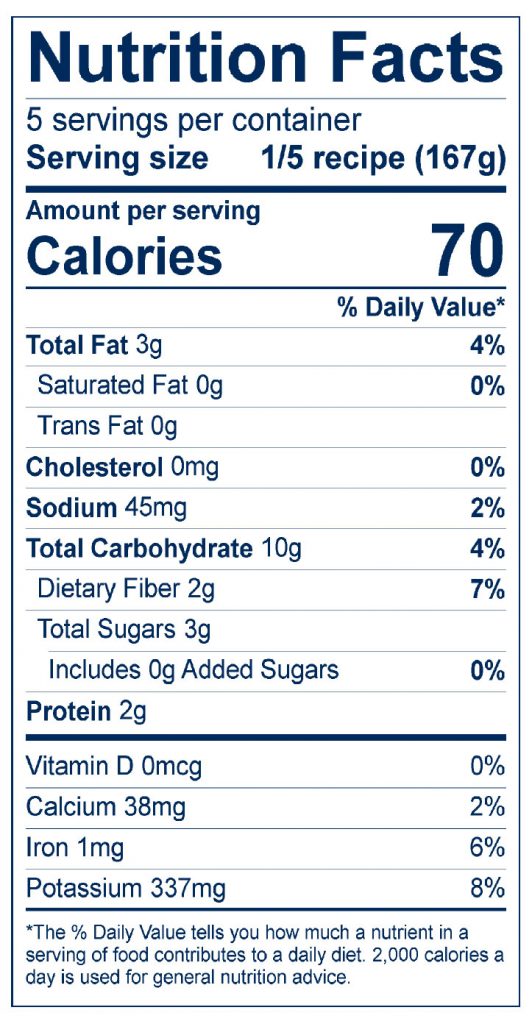 Directions
Directions
- Preheat oven to 375° F.
- Wash hands with soap and water.
- In a large bowl, drizzle oil over the bread, add garlic powder and salt.
- Toss bread with oil and seasonings until covered, place on a baking sheet in the oven for 10 minutes, stirring once halfway through. Croutons are done when crisp and lightly toasted.
- Wash all vegetables.
- Chop the salad greens, carrot, pepper, tomato, and cucumber into bite-sized pieces and layer in bowl.
- When croutons have cooled, sprinkle over the salad along with your favorite dressing or oil and vinegar.
This is a great recipe to use with local produce. Swap out any of the vegetables listed to make the recipe your own. Other topping ideas include using beans, cheese, nuts, and seeds.
Makes 5 servings
Serving Size: 1/5 recipe
Cost per recipe: $7.32
Cost per serving: $1.46
Ask EFNEP!
Deborah Barnett, Kennebec County
Deborah “Debbie” Barnett has been part of the University of Maine Cooperative Extension Expanded Food and Nutrition Education Program for 7½ years.
“I absolutely love the variety of people I get to interact with!” says Debbie. “The excitement of the students in schools and the shared ideas of our newest community members are two of the most gratifying things I have experienced on the job.”
Debbie looks for the positive in every day. Whether it be spending time with her three grandchildren, playing with her dog, Jed, going on small adventures with her fiancé or just relaxing by the lake. Her motto is … “It’s All Good!”
Q. What vegetables can I plant in a container?
A. We know that adding fresh vegetables to our diet is a great idea. Have you ever thought of growing your own? Many of us just don’t have the space to start a traditional garden but have you considered a container garden?
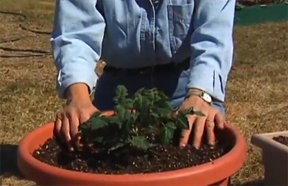 Many vegetables and herbs grow well in as little as a 5-gallon bucket.
Many vegetables and herbs grow well in as little as a 5-gallon bucket.
- You could grow the ingredients to make your own salad or salsa. Many varieties of tomatoes do well in containers, as do peppers (both sweet and jalapeno) and onions.
- Have your children help you plant the vegetables and watch their excitement as they pick and eat their own green beans or peas!
- Herbs such as chives, parsley, and oregano can also be planted in window boxes or small pots for year-round flavor additions.
For more information and ideas check out the University of Maine Cooperative Extension Bulletin #2762, Growing Vegetables in Containers.
Food Safety Corner:
Washing and Storing Greens
By Rebecca Sprague, UMaine Dietetic Intern
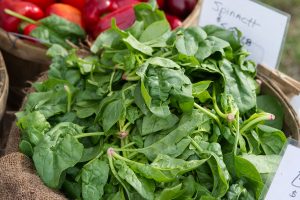 Greens such as kale, spinach, or swiss chard are full of vitamins, minerals, and fiber. They can also be used in a variety of recipes. Here are some tips for washing and storing greens.
Greens such as kale, spinach, or swiss chard are full of vitamins, minerals, and fiber. They can also be used in a variety of recipes. Here are some tips for washing and storing greens.
- Immediately refrigerate greens after purchasing or refrigerate within two hours of purchasing.
- Greens that are not labeled “washed” or “ready to eat” need to be washed before preparation.
How to Wash Greens
- Separate the leaves and remove any bruised, wilted, or discolored leaves.
- Fill a bowl with cold water and let leaves soak for a few minutes, moving the greens around in the water to remove any dirt that may be on the leaves.
- Lift the greens out of the water, leaving any dirt in the bottom of the bowl. Some greens may require more than one washing to remove all dirt or sand.
- Drain in a colander and dry the greens with a salad spinner or pat dry with a clean towel.
Storage
- Greens can be stored in a clean plastic bag in the crisper or produce drawer of the refrigerator.
- Greens can be washed before storing it in the refrigerator or stored unwashed and washed directly before using it.
- If greens are washed before storing, be sure to dry them thoroughly. A paper towel can be added to the bag to help soak up any extra water left on the greens.
Specific storage examples are in the table below.
| Type of Green | Recommended Storage |
|---|---|
| Kale | Store greens in a plastic, perforated bag in the refrigerator. Use within 2 to 3 days. |
| Collard Greens | Store in the crisper drawer of the refrigerator in an open or perforated plastic bag. Use within one week. |
| Mustard Greens | Wrap tightly in plastic and keep in the refrigerator. Use within 2 to 3 days. |
| Beet Greens | Can be stored in the refrigerator either in a plastic bag or wrapped in a damp paper towel. Use within 2 to 3 days. |
| Spinach | Store in the refrigerator in a plastic bag for up to 4 days. |
| Dandelion Greens | Wrap in a damp paper towel, place in a perforated plastic bag, and store in the refrigerator. |
| Swiss Chard | Store unwashed greens, wrapped in plastic, in the crisper drawer of the refrigerator. Use within 2 days – wash before using. |
| Turnip Greens | Wrap greens in a damp paper towel, then place in a perforated plastic bag and refrigerate. Use within 4 to 7 days. |
Sources
- Iowa State University Cooperative Extension, Kale and Collard Greens
- University of Maine Cooperative Extension, Bulletin #4180, Vegetables and Fruits for Health: Greens
- University of Maine Cooperative Extension, Bulletin #4336, Best Ways to Wash Fruits and Vegetables
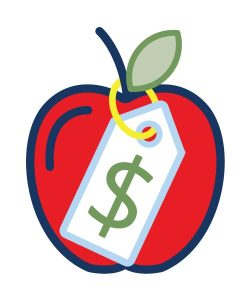 Quick and Easy Eat Well Recipe:
Quick and Easy Eat Well Recipe:
Veggie and Protein-Packed Breakfast Strata
Ingredients
- 4 slices whole-wheat bread
- 1 teaspoon oil
- 5 large eggs
- 1½ cups skim milk
- ¾ cup shredded low-fat cheese (cheddar or mozzarella)
- 2 cups chopped vegetables* (tomatoes, mushrooms, spinach, or onions)
- Salt and pepper to taste*
Prior to chopping, gently rub vegetables under running water to wash.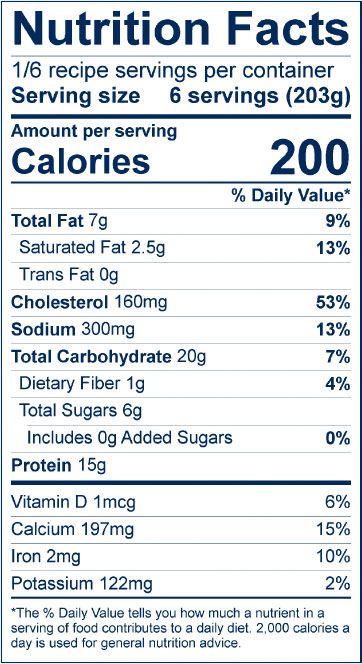
Directions
- Preheat oven to 3500F.
- Wash hands with soap and warm water.
- Lightly toast bread, this will help the texture of the strata. Tear or cut the bread into bite-sized pieces and arrange in the bottom of a greased 9-inch square baking dish.
- Add oil to a skillet and sauté vegetables on medium-high heat until tender. Set aside to cool.
- In a large bowl, whisk together the eggs, milk, and salt and pepper. Wash hands after touching raw eggs. Stir in cheese.
- Layer cooked vegetables over bread in baking dish. Pour egg mixture over vegetables and bread.
- Bake for 45 minutes, or until the internal temperature reaches 160°F on a food thermometer. Let cool for 10 minutes before serving.
Makes 6 Servings
Serving Size: 1/6 recipe
Cost per Recipe: $4.27
Cost per Serving: $0.71
The EFNEP newsletter is published two times a year for current, past, and future UMaine Extension Expanded Food and Nutrition Education Program participants. For more information on the EFNEP program, contact your UMaine Extension county office.
Managing Editor: Kate Yerxa, MS, RD
EFNEP Committee: Kathleen Savoie, MS, RD, Extension Educator; Kate Yerxa, MS, RD, Extension Educator; and Brenda Bracy, Community Education Assistant.
This material was funded by the National Institute for Food and Agriculture’s (NIFA) Expanded Food and Nutrition Education Program (EFNEP).
Information in this publication is provided purely for educational purposes. No responsibility is assumed for any problems associated with the use of products or services mentioned. No endorsement of products or companies is intended, nor is criticism of unnamed products or companies implied.
© 2019
The University of Maine is an EEO/AA employer, and does not discriminate on the grounds of race, color, religion, sex, sexual orientation, transgender status, gender expression, national origin, citizenship status, age, disability, genetic information or veteran’s status in employment, education, and all other programs and activities. The following person has been designated to handle inquiries regarding non-discrimination policies: Sarah E. Harebo, Director of Equal Opportunity, 101 North Stevens Hall, University of Maine, Orono, ME 04469-5754, 207.581.1226, TTY 711 (Maine Relay System).
